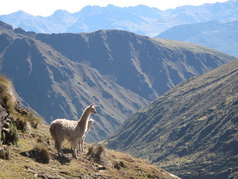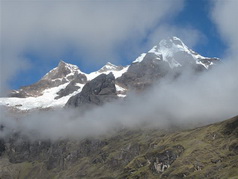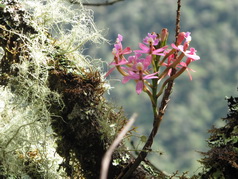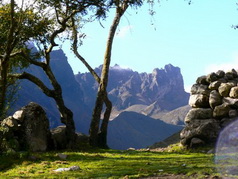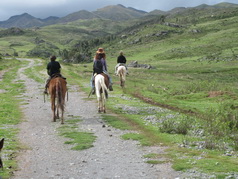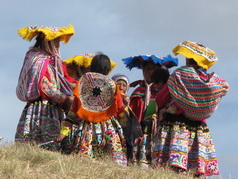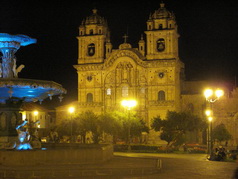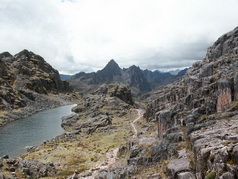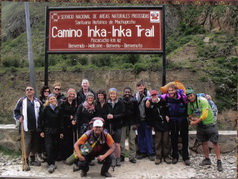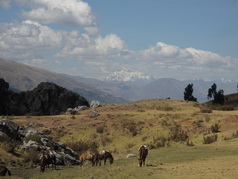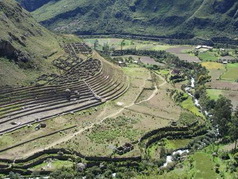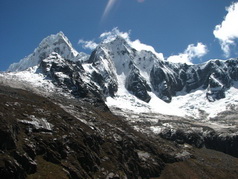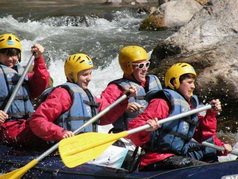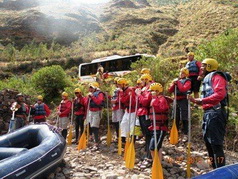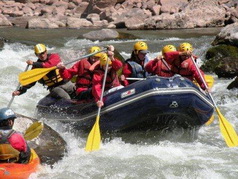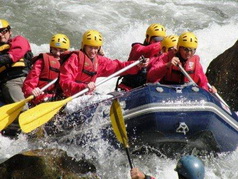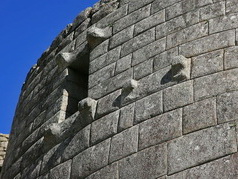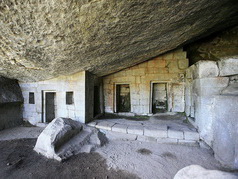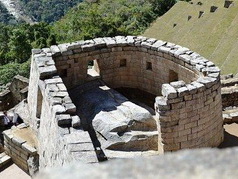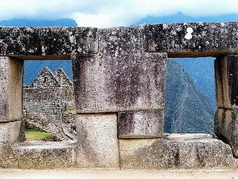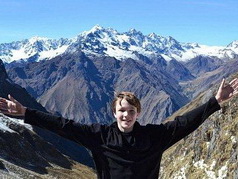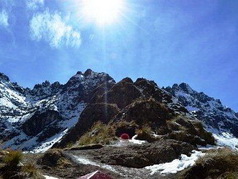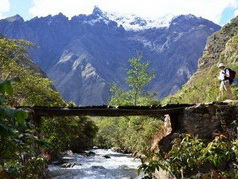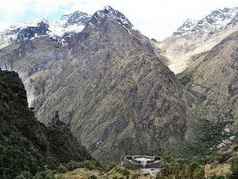
 +51 984 673 124
|
+51 984 673 124
|  +51 984 652 232
| [email protected]
+51 984 652 232
| [email protected]
New Page CLICK here: Join us for the Experience of a Lifetime... !!!
Direct operator & locally owned.Sustainable, responsible & ethical tours since 1990.
Menu
Tours & Destinations
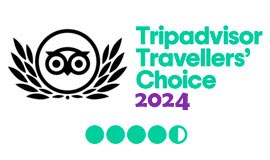
Tours / Programs
- EDUCATIONAL group travel for Schools, Universities.
- LUXURY TOURS -NEW. FAMILY & TAILOR MADE TOURS -Daily Departures. PRIVATE TOURS. 2025, 2026.
- 12 Days Package -EXPLORER. Cusco,Sacred Valley, Choquequirao and Machupicchu. 2025/26
- 9 Days Family Tour. Classic Inca Trail, Sacred Valley, Machupicchu & Cusco. -ADVENTURE DELUXE.
- 7 Days Family Package. Cusco, Pisac & Short Inca Trail to Machu Picchu -DELUXE ADVENTURE.
- 7 Days Family Package. Cusco, Sacred Valley, Vistadome Train to Machu Picchu. -LUXURY TOUR.
- 5 Day De-Luxe Tour. Vistadome Train to Machu Picchu, with Sonesta Valley and Inkaterra Pueblo Hotel. Daily Departures. Book Now!
- MULTI DAYS TOURS with CLASSIC INCA TRAIL TREK. -LIMITED SPOTS. BOOK IN ADVANCE. 2025, 2026.
- CUSCO, Sacred Valley, 5 Day CLASSIC INCA TRAIL, Aguas Calientes and Huaynapicchu Mt. 9 Day Tour Package.
- CUSCO, Sacred Valley, Rainbow Mt hike, 4 Day/ 4 Night Inca Trail Trek with 8 Kg porter. -9 Day Tour Pakage.
- CUSCO Tour, Sacred Valley, RAINBOW Mountain, 4 Day INCA TRAIL . 8 Day Tour Package. NEW.
- CUSCO, Sacred Valley, 4 Day/ 3 Night CLASSIC INCA TRAIL + 8 Kg porter. -7 Day Tour Package.
- CUSCO, Maras, Moray, the Sacred Valley, 4 Day Inca Trail Trek. (-optional a night in Ollantaytambo.) 8 Day Tour Package.
- Cusco, SHORT INCA TRAIL, Colca Canyon, Titikaca Lake. 10 Day Tour Package. Daily Departures.
- SHORT Inca Trail Trek, Cusco & Sacred Valley. 5 Day Tour Package. Daily Departures.
- SHORT Inca Trail Trek, Cusco, Sacred Valley, Humantay Lake, Rainbow Mt hike and Moray. 7 Day Tour Package. Daily Departures.
- AMAZON & MOUNTAINS. Cusco, Sacred Valley, 4 Day Inca Trail Trek & Jungle Trip in Puerto Maldonado. 10 Day Tour Package.
- Cusco, MULTI -ADVENTURES, Sacred Valley, Mt Biking, River Rafting, 4 Day Inca Trail trek. 10 Day Tour Package.
- ESCAPA A LA AVENTURA, Cusco, Rainbow Mountain 1 Day, Short Inca Trail Hike. 5 Day Tour. -Daily Departures.
- LARES TREK & SHORT INCA TRAIL to MACHU PICCHU, Cusco 8 Day/ 7Nights - Available.
- CLASSIC lNCA TRAIL 4 Day Trek & MANU National Park.COMBO. 10 Day Tour Package. (Promotional rate).
- AMAZON JUNGLE TRIP, Cusco, Sacred Valley, Short Inca Trail Trek to Machu Picchu & Puno. 12 Day Tour Package. Daily Dapartures.
- MANU Park, Cusco, Sacred Valley and 4 Day Inca Trail Trek. 12 Day Tour Package. Promotional.
- CONDOR EXPRESS, Cusco, Sacred Valley, 5 Day Inca Trail Trek with Aguas Calientes, Titikaca Lake. 13 Day Tour Package.
- PERU AVENTURA, Lima, Paracas, Ballestas,Nazca Lines, Titikaca Lake, Cusco, Sacred Valley, Short Inca Trail. 15 Day Tour Package.
- MARCA PERU, Cusco, Sacred Valley, 4 Day Inca Trail Trek, Titikaca Lake, Colca Canyon & Nazca Lines. 15 Days Tour Package.
- VIVA el PERU -15 Day Tour (with 5 Day Inca Trail trek with 8 Kg porter service) Group Service.
- AROUND PERU, Cusco, Sacred Valley, 5 Day Inca Trail Trek. Titikaca Lake, Colca Canyon, Nazca Lines, Lima. 18 Days Tour Package.
- PERU WONDERFUL. 4 Day Jungle Trip, Cusco, Sacred Valley, 5 Day Inca Trail, Titikaca Lake, Colca, Nazca, Lima. 20 Days Package.
- PERU AMAZON 18 Day. Lima, Jungle Trip, Cusco, Rainbow Mt, Sacred Valley, Inca trail Trek, Nazca, Paracas, Dunes in Ica.
- EXPLORING PERU & Jungle 21 Day (with 5 Day Inca Trail trek)
- MULTI DAYS TOURS without CLASSIC INCA TRAIL TREK. -DAILY DEPARTURES:
- THE BEST OF CUSCO. (No trek). 4 Days Tour Package. Daily Departures. 2025/ 26.
- AVOID Altitude Sickness. 5 Day Tour -Daily Departures.
- DISCOVER CUSCO. (No trek). 5 Days Tour Package. -Daily Departures.
- ADVENTURE CUSCO, Rainbow Hike, Maras, Moray, Salt Mines,Sacred Valley and Machu Picchu .(No Trek). 6 Day Tour -Daily Dapartures.
- MAGIC CUSCO, Valle Sagrado y Machu Picchu. (No trek). 7 Day Package. Daily Departures.
- CUSCO, Sacred Valley, Machupicchu, Puno, TITIKACA LAKE Floating Islands -7 Day Package.
- THE BEST ADVENTURE Inca Jungle Trek, Rainbow Mountain, Sacred Valley, Cusco. 7 Day/ 6 Night NEW. -Daily Departures !!
- SALKANTAY TRAIL, Sacred Valley, Moray Maras, MACHU PICCHU, HUAYNAPICCHU & Cusco 9 Day / 8 Night. -Available
- AMAZON JUNGLE, Tour Puerto Maldonado & Cultural -Cusco, Sacred Valley and MACHU PICCHU -8 Day Tour
- LIMA,NAZCA LINES,CUSCO, RAINBOW MOUNTAIN, MACHUPICCHU,SACRED VALLEY, MARAS MORAY 11 DAY TOUR.
- EXPLORING LIMA, CUSCO, SACRED VALLEY, MARAS, MORAY, SALT MINES, RIVER RAFTING, MACHU PICCHU BY TRAIN. 9 Days Tour.
- CHOQUEQUIRAO, MACHU PICCHU, SACRED VALLEY, CUSCO 10 Days Tour Package -Daily Departures.
- AMAZON & MACHU PICCHU 10 Day/ 9 Nights. DeluxeTour (No Trek) Daily Departures !!
- EXPLORING CUSCO, SACRED VALLEY, MACHU PICCHU, PUNO & Titikaca Lake.10 Day Tour
- INCAS, ISLAND and CONDOR 12 Day Tour. Cusco, Sacred Valley, Machu Picchu, Colca Canyon in Arequipa, Titikaca Lake, Puno.
- JAGUAR EXPRESS. 14 Day Tour. Lima, Amazon Lodge, Cusco, Sacred Valley, Machu Picchu by Train, Uros, Taquile Titicaka Lake, Puno.
- PERU EXPRESS. 17 Days Tour. Lima, Paracas, Ballestas, Flight over Nazca, Colca Canyon, TitiKaca Lake, Cusco, Machu Picchu.
- PERU PREMIUM -DELUXE. 17 Day Tour. Lima, Paracas, Ballesta, Nazca Lines, Amazon Lodge, Cusco, Machu Picchu w INKATERRA Hotel.
- PERU, BOLIVIA & CHILE. Cusco, Machupicchu, Puno Floating Islands, Copacabana, La Paz, Uyuni Salar, San Pedro Atacama. -14 Day
- PERU & BOLIVIA. Cusco, Sacred Valley, Machupicchu, La Paz, Valley of the Moon, Tiawanaco, Copacabana Puno, Juliaca. -12 Days.
- CLASSIC INCA TRAIL TREKS to MACHU PICCHU. -LIMITED SPOTS. BOOK NOW:
- Inca Trail Classic Trek 4Days/3Nights -Small Group. AVAILABLE on: 2025/26.
- Inca Trail Classic 4Day/3Night -PRIVATE SERVICE Available on 2025/26
- Inca Trail plus Huaynapicchu mountain & Aguas Calientes 5D/4N - Group Service.
- Inca Trail 4Day/4Night with extra night in Aguas Calientes -Group Service.
- Inca Trail & Inkaterra Machu Picchu Pueblo Hotel 5D/4N Aguas Calientes DE-LUXE -Group OR Private Service.
- Sacred Valley tour. Night in Ollantaytambo & Inca Trail 5Day/4Night -Group Service
- Inca Trail Spiritual 5D/4N "PILGRIMAGE" Trek to Machu Picchu -Private Service.
- SALKANTAY Mt and Classic Inca Trail Trek 7Day/6Nights -Private Service
- SHORT INCA TRAIL TREK to MACHU PICCHU 2DAY/1NIGHT in 2025- 2026. -Private and Group Service.
- SHORT INCA TRAIL TREK to MACHU PICCHU with CAMPING 2 Day/1Night -Private Service.
- SACRED VALLEY & SHORT INCA TRAIL to MACHU PICCHU 3 Day/ 2 Night -Group Service.
- Cusco, RAINBOW Mt, Sacred Valley, 1 DAY SHORT INCA TRAIL. 5 Day Tour. -Daily Departures.
- ALTERNATIVE TREKS: TREKS to MACHU PICCHU, SHORT INCA TRAIL -FIXED DEPARTURES.
- Lares Trek + Short Inca Trail 4Day/3Night -Group Service. Fixed Departures. NEW
- Salkantay Trek to Machu Picchu. 5 Day/4 Night -Small Group Service. Confirmed Departs:
- Salkantay Sky Lodge to Lodge to Machupicchu 5 Day/4 Nights Trek. -Daily Departures.
- Salkantay Trek to Machu Picchu 4 Day/ 3 Night -Small Group Tour. Daily Departures:
- Lares ValleyTrek, Machu Picchu 4Day /3Night -Small Group Service. Confirmed Departs
- Huchuy Qosqo hike, Sacred Valley and Machu Picchu. 3Day /2Night.
- Huchuy Qosqo & Machupicchu Hike 2D/1N. "NEW"
- INCA JUNGLE Trek to MachuPicchu. 4 Day/3Night -Daily Departures. BIKING, RAFTING and ZIP LINE.
- Choquequirao Trek & MachuPicchu + HuaynaPicchu Mt. 8 Day/7Nights -Daily Departures. Private Tour.
- Choquequirao Trail 5 Day/4 Night Trek. Daily Departures.
- Choquequirao Trail 4Day/3Night hike. Daily Departures!.
- Ausangate Mountain Trek. Full Loop 6Day/ 5Night plus Rainbow, Red Mountain.
- Ausangate Trek and Rainbow Mountain 4 Day / 3 Night Trek "NEW"
- Huchuy Qosqo Trail 1 Day Trek (Daily Departures)
- Huchuy Qosqo Trek 2 Day/ 1 Night. (without Machu Picchu) -Daily Departures !!.
- MACHU PICCHU TOURS by TRAIN with VISTADOME or EXPEDITION. -DAILY TOURS in 2025,2026.
- Sacred Valley Guided Tour, Aguas Calientes, Machupicchu."COMBO" Tour 2 Day/1 Night -Daily Departures! 2025/26
- Chincheros, Maras, Moray, Salineras and Machu Picchu 2 Day/1 Night. NEW. -Daily Departures
- Machu Picchu Guided Tour "SUNRISE" 2 Day/1 Night -Daily Departures !
- Machu Picchu by Train & Walk to Mandor, Night in Aguas Calientes. "ACTIVE" Tour 2 Day/ 1Night.
- Sacred Valley of the Incas + Machu Picchu. EXPLORERS 3 Day/ 2 Night -DAILY DEPARTURES.
- Machu Picchu DELUXE by VISTADOME with INKATERRA 5 star Hotel. 2 Day Tour. DAILY DEPARTURES.
- MachuPicchu with VISTADOME (De Luxe)Train 1 Day Guided Tour. DAILY DEPARTURES !
- Machupicchu with EXPEDITION train Guided Tour 1 Day. DAILY DEPARTURES:
- SPECIAL Machu Picchu with HIRAM BINGHAM -PERURAIL TRAIN 1 Day Guided Tour. DAILY DEPARTURES
- Entrace Ticket to Machu Picchu Citadel. (Machu Picchu Llaqta) -1 Day 2025 -DAILY.
- Tickets for Machupicchu & Huaynapicchu. 1 Day
- Mountain Lodge to Lodge Salkantay-MachuPicchu.
- CUSCO'S Soft HIKES, RAINBOW Mountain, HUMANTAY Lake, River Rafting, Mt Biking, Horse Riding.
- RAINBOW Mountain / Montaña de Colores (Vinocunca) Full Day. Daily Departures !!!
- RAINBOW Mountain 2Day/1Night Trek. (Montaña de Colores) -Daily Departures !!!
- HUMANTAY Mountain 1 Day Hike. Daily Departures
- PALCCOYO Mountain, Stone Forest -Full Day Tour -Daily Departures
- 2 Day/1 Night Horse back riding Inkatambo-Chakan- Waypo Lake-Chincheros.
- River rafting and Mountain Bike 2 Day/1Night -Daily Departures !
- River Rafting 1 Day Urubamba
- Horse Back Riding 4 Ruins (4Hrs)
- Horse Back Riding Mystic (4hrs)
- Mountain Biking Moray & Salt mine
- Mountain Biking Pisac Huambutio
- Mountain Biking Qenqo 5 hours
- TOURS in CUSCO and AROUND, The SACRED VALLEY, Maras, Moray, Salt Mines, South Valley, Saqsawaman, Coricancha.
- CUSCO -City Tour. Saqsawaman, Kenqo, Tambomachay, Pucapucara,Cathedral & Koricancha. -Group and Private Service.
- SACRED VALLEY Tour. Pisac, Ollantaytambo, Chincheros. Daily Departures. Group Tour.
- SACRED VALLEY TOUR, MARAS, MORAY, THE SALT MINES, PISAC. CHINCHEROS. PRIVATE TOURS.
- Moray, Maras & Salt mines Guided Tour. Daily Leavings. -Group Service.
- Moray, Maras, Salt-Mines & Chincheros -Daily Departures -Private Service.
- SKYLODGE in the Sacred Valley -DAILY SERVICE.
- Tipon & SOUTH VALLEY TOUR.
- EXTENSION TOURS:Colca Canyon, Titikaca Lake, Nazca Lines, Ballestas Islands,Paracas, Ica Dunes -DAILY DEPARTURES
- Titicaca Lake Islands Puno 4 Day/ 3 Night Tour. Leaving from Cusco and returning to Cusco. Daily Departures.
- The HIGHEST Navigable Lake and DEEPEST Canyon in the World. 7 Days/ 6 Nights. -Leaving from Cusco, Puno and ending in Arequipa.
- Titicaca Lake Islands Puno 4 Days/ 3 Nights Tour. Starting from Juliaca Airport and ending in Cusco. Daily Departures..
- Titikaca Lake Island Tour -Puno 3 Days/ 2 Nights -Leaving from Cusco and return to Cusco.Daily Departures.
- Titicaca Lake Islands 3 Days / 2 Nights from Cusco ends Puno with full day visit to Uros and Taquile Islands
- Titicaca Lake Islands Puno 3 Days / 3 Nights (from Cusco ends at Juliaca Airport in Puno.)
- Titicaca Lake Islands Puno 3 Days / 2 Night from Cusco (end in Puno)
- 2 Days / 1Night. -Uros, Amantani and Taquile Islands Titikaca Lake Tour. Start from Puno. Daily Departures.
- Uros & Taquile Islands 1 Full Day Tour Lake Titikaca. (Start from Puno.)
- Half Day Uros Islands tour. (Start from Puno.)
- COLCA CANYON Guided Tour. 1 Day -Daily Departures.
- COLCA CANYON TREK 3 Day/2 Nights -Daily Departures !!!
- Colca Canyon 2 Day/1 Night tour. From Puno to Arequipa. Daily Departures.
- Colca Canyon 2 Day/1 Night Tour -From Arequipa to Puno. Daily Departures.
- COLCA CANYON 2 Day/1 Night Tour. (From Arequipa return to Arequipa.) -Daily Departures
- COLCA CANYON and LAKE TITIKACA 7 Days 6 Nights Tour (Leaving from Arequipa, Puno and Cusco).
- NAZCA Lines Flight Private Tour + Ballestas Islands, Ica & Huacachina Dunes -Full Day Trip. Departures from Lima.
- NAZCA Lines Tour. Flight from Pisco, Tour Huacachina -Full Day. Group service. (Daily Departures from Lima.)
- Nazca Lines Flight , Ballestas Islands, Ica, Huacachina Dunes 2 Day/1 Night. Departs from Lima and return to Lima.
- Nazca Lines Flight, Ballestas Islands & Paracas,Cruz del Sur Bus to Lima. 3 Day (From Cusco to Lima)
- Nazca Lines Flight Tour 2 Day (From Cusco to Lima)
- Nazca Lines Flight 2 Days Tour. (From Arequipa to Lima).
- Nazca, Ballestas & Paracas, 3 Day (From Arequipa to Lima)
- LIMA GUIDED TOURS, GOLD MUSEUM, LARCO MUSEUM, PACHACAMAC, CARAL, PALOMINO ISLANDS. -DAILY DEPARTURES:
- BELMOND ANDEAN EXPLORER Deluxe TRAIN. Cusco-Puno / Puno-Cusco
- Inka Express Tour Bus from -Cusco to Puno. Daily Departures.
- Inka Express Tour Bus from -Puno to Cusco. Daily Departures.
- INTI RAYMI -Inka`s winter solstice Sun Festival 2025.
- INTI RAYMI 2025, Inca Trail 4 Day and Cusco 8Day /7Night -Group Service.
- INTI RAYMI 2025, Machupicchu by Train, Cusco, Sacred Valley 6 Day/5 Night -Group Service
- INTI-RAYMI 2025, Machu Picchu by Vistadome Train and Cusco 4Day/3Night -Group Service
- INTI RAYMI Winter solstice Sun`s Festival -Full Day on June 24 -Group Service.
- MANU NATIONAL PARK (Reserved & Cultural Zone) Jungle Tours. FIXED DEPARTURES.
- MANU NATIONAL PARK -Giant Otters Tour 6Day/5Night (Reserved Zone)
- MANU NATIONAL PARK -Macaw Explorers 8 Day/ 7 Night (Reserved Zone & Biosphere Reserve)
- MANU -Horned Screamer (Manu Reserved Zone) 7D/6N Bus & Bus.
- MANU -Jaguar Tour 7D/6N (Manu Reserved Zone) Macaw Clay Lick. Return by plane or van to Cusco.
- Manu Birdwatchers Tour 5Day/4Night. (Manu Cultural Zone) MANU NATIONAL PARK - 2025 Rates
- Manu Cloud Forest Jungle Tour 4 Day/ 3Night (Manu Cultural Zone)
- Manu Express Jungle trip 3 Day / 2 Night (Manu Cultural Zone)
- AMAZON JUNGLE Tours in Puerto Maldonado, Iquitos Tambopata Reserve. -DAILY DEPARTURES
- Tambopata Research Center Lodge by Rainforest Expedition. 4Day/3Night Tour -Puerto Maldonado. Daily Departures.
- Refugio Amazonas Lodge by Rainforest Lodge. 3 Day/2Night Tour. -Tambopata Park. Puerto Maldonado.
- Posada Amazonas Lodge by Rainforest Expedition. 3Day/2 Night Tour -Tambopata Reserve. Puerto Maldonado. -Daily Departures
- Posada Amazonas Lodge by Rainforest Expedition. 4Day/ 3Night Tour -Tambopata Reserve. Puerto Maldonado.
- Posada Amazonas Lodge 5 Day/ 4 Night -Tambopata Reserve.
- Inkaterra Reserva Amazonica Lodge. 3Day/ 2Night -Puerto Maldonado. Daily Departures.
- Inkaterra Reserva Amazonica Lodge. 4Day/ 3Night -Puerto Maldonado. Daily Departures.
- Hacienda Concepcion Lodge by Inkaterra. 3Days 2Nights Tour. Puerto Maldonado. Daily Departures
- Hacienda Concepcion Lodge by Inkaterra. 4Days/3Nights Tour. Puerto Maldonado. Daily Departures
- Corto Maltes Lodge 5Day/4Night -Puerto Maldonado
- Corto Maltes Lodge 4Day/3Night -Puerto Maldonado.
- Corto Maltez Lodge 3 Day/ 2 Night - Puerto Maldonado. Daily Departures
- Sandoval Lake Lodge 4 Day/ 3 Night -Puerto Maldonado
- Sandoval Lake Lodge 3 Day/ 2 Night -Puerto Maldonado
- Ecoamazonia Lodge 4 Day / 3 Nights -Puerto Maldonado
- Ecoamazonia Lodge 3Day/2Nights Tour. ECOLOGICO -Puerto Maldonado
- Cayman Lodge Amazonia Tambopata. -Puerto Maldonado 4 Days/3 Nights Tour. -Daily Departures.
- Cumaceba Lodge "Papagayo 4Day/3Nigh Tour -IQUITOS
- Explorama Lodge 4 Day / 3 Night tour. -IQUITOS.
- Pacaya Samiria Amazon Lodge 4 Day / 3 Night tour. -IQUITOS.
- CORDILLERA BLANCA. Huaraz. Santa Cruz Trek, Huayhuash Trek.
- PERU & BOLIVIA. Cusco, Machupicchu, Floating Islands, Copacabana,La Paz, Uyuni Salar.
- 12 Day Tour (Peru Bolivia). Cusco, Sacred Valley, Machupicchu La Paz, Valley of the Moon, Tiawanaco,Copacabana, Juliaca to Lima.
- Puno to La Paz. 4 Days 3 Nights featuring tours to the Island of the Sun and Tiwanaku La Paz Bolivia.
- Cusco, La Paz Bolivia, Chacaltaya Mt, The Moon Valley, Copacabana, The Sun Island 5 Days.
- Tours to Galapagos -Fixed Departures !! Cruises and Yacht. ECUADOR.
- BRAZIL, ARGENTINA and CHILE. 14 Days / 13 Nights
- Cusco: More than just Machu Picchu, the real Peruvian family -our people from Andean Communities.

Manu National Park
Biosphere Reserve & Jungle Tours Official Operator - 1990 World Natural Heritage - UNESCO
If you have any queries
Permits, Packages & Tours:
SKYPE US:
CALL US: GMT -5 hour
Office Phone: +51 84 256324
+ 51 984 673124 (24/7)
+ 51 984 652232
GMT +8 hour
Australia: +61 480 157471
Peru/Cusco Office Open Hours
Mon-Sat: 8am-7pm
Pioneer in Trips to Peru supporting sustainable, responsible & ethical tourism in Peru, since 1990.
Professionalism, Integrity, Generosity, Solidarity & Experience… travel with a purpose with SAS, to give back to others & have a true positive impact in this unfortunate society. Unemployment levels in Cusco`s region and the Southern are very high, especially after Covid. Thanks for letting us help and serve others.Traveling with SAS Travel & Marqueses Hotel helps more than 300 hundred farmers of 5 communities in Pisac at the Sacred Valley of Urubamba who work as a porter, cooks, guides and drivers in our treks and to ANIQUEM. The Burnt Child Help Association in Peru. “We change pain for smiles and scars for hope.” Compression garment workshop in Cusco Regional Hospital aniquem.org
Highly Recommended by:
- South American Handbook (Footprint)
- Lonely Planet Peru Guide
- South America on a Shoestring (Lonely Planet)
- Peru Handbook (latest edition)
- Cusco & the Inca Trail Handbook
- The Inca Trail Cusco & Machu Picchu(Trailblazer),
- Moon Handbooks Peru (latest edition),
- Andean Travel Web Guide to Peru
- South American Explorers Club.
- Awarded Best Cusco Travel Agency by the Ministry of Tourism.
---
Our recomendations:
Book your flight tickets to Lima 8-6 months before to optain best rates. Lima located at 0 masl is a beautiful city, its colonial plazas, monuments and museums are really impressive. It's worth staying for a few days, but with caution. Choose Miraflores or San Isidro for your staying. There are more than 28 flights to Cusco. 1 Hour flight and you reach Cusco located at 3,400 masl
Direct flights to Cusco only from Santiago de Chile, Bogota Colombia or La Paz Bolivia. (If you have time explore minimum a week or more in those beautiful countries.
If your plans are hike the famous Inca Trail trek 4 or 2 days version book with us and we will take care of all permits and entrance tickets.
Other tours by train or in our Multiday tours with Machu Picchu by train trip also available, book in our page (3-2 months before) the entry to the Citadel are included and carry out by us OR you can purchase your entrance to Machu Picchu in this page: www.tuboleto.cultura.pe (Book 2-3 months before), book your tour in the page of the interested tour and we will reduce the cost of your entry in your tour.
---
Discover the Wonders of Peru, Machu Picchu, Cusco, Colca Canyon, Nazca Lines,Titikaca Lake with SAS.
SAS Travel is well known Tour Operator and Travel Agency for a quality scorted tours, guided by experts, daily sightseeing tours, trips by train to Machu Picchu, hiking over the mountains the the Andes of Peru and Jungle excursions with highly recommended and expert guides and camping staff. We have been running trips to Cusco, Machu Picchu in Peru and Bolivia since January 1990. We are a licensed and a certified by Sernanp, INC and we hold all adventure Licenses. We are a Official Operator for the Inca Trail treks to Machu Picchu as Adventours SAS CI 0006 RUC 20490098951 and Marquez Viajes y Servicios. CI 1518 RUC 201489995655. We are proud and we respect to our ancient communities and Andean towns, its history and traditions, we respect our archaeological sanctuaries, we support and create jobs for our people. Indulge in the glory with the delicious peruvian gastronomy, healthy prepared with natural product. Our service is second to none! We are an Environmentally sensitive company.
Walking in the mountains fills you with tranquility and gives you inner peace and the ancient temples connect and open doors to new dimensions. You will feel joyness and relaxed being in contact with culture, nature, and people who preserve a millennial tradition and tries to preserve for the future.
"SAS Travel, a reliable and professional company in Cusco. Lonely Planet.2024"
---
The 4 Day or 5 Day INCA TRAIL regulations by Sernanp and INC. How to understand the limitation of permits and the need fo booking in advance.
For 3 decades until 2003, individuals used to hike the Inca Trail independenly without a guide or with an informal agency, without looking after the enviroment and leaving trash along the trail and at campsites, loading overweight to carriers and paying ridiculous sums. 1.- Now INC and SERNANP certifies to travel agencies to operate on the Inca Trail, ensuring they comply with conservation and safety requirements.This institution regulates the number of visitors and activities carried out on the Inca Trail to minimize environmental impact.
2.- All hiker to Inca Trail must book through an official agency and required to go in a group with an official guide, porters and a cook. The overall number of hikers permitted on the trail was significantly reduced, to 200 per day (with an additional 300 hiking staff, for a total daily number admitted of 500.)
3.- The maximum number of trekkers per group outing is capped at 16 (lead by 2 guides) our group are usually composed by 8 hikers with 1 guide a cook and porters.
4.- The maximum load's porters can carry has been limited to 18 Kg (40 lb) plus his 5Kg for his personal belongings.
5.- Theses changes have cut the number of trekkers on the trail in half and it is a mandatory booking in advance (6-4 months) before pertmits are sold out.
6.- Guarantee your space (a permit) on the trail by making a reservation at least 6-4 months before, for high season from May to October (Book 7-5 months before).
7.- Getting a spot (a permit) and waiting until you arrive in Cusco is a ridiculous risk, there are not cancelled permits or last minute spots, if you are really planning to hike the Inca Trail book a tour in advance. The good news is now the trail is not packed, is more organized, clean campsites and toilets, this reduction helps to mitigate and minimize negative impact and its preservation is better.
8.- When permits for Inca Trail 4 Day are sold out, we still recommend you to hike our -Alternative treks as: 5 Day Salkantay, 4 Day Lares Valley + short Inca Trail, 4 Day Lares Valley Trek and 3 Day Huchuy Qosqo all connecting Machu Picchu or our 5 Day Choquequirao trek, or 5 Day Auzangate hike without MachuPicchu.
---
Recommended trips to Machu Picchu. Opt for 2 days 1 night option.
DeLuxe Hiram Bingham Train (Expensive), Vistadome Observatory Train (Moderate). Expedition Train (Reasonable) -Available Daily departures.
Recommended tour to Machu Picchu is the 2 Day 1 Night by Vistadome or Expedition train from Ollantaytambo.
Economical 2 Day tours to Machu Picchu by 6 Hrs car plus 2 hours walk to Aguas Calientes town and next day early you take a bus to reach the Citadel for your visit. Contact us with your queries at: [email protected]
---
INCA TRAIL TREK:
Permits for Inca Trail and Multiday tours with Inca Trail trek are limited, First, come...First, serve basis... (We strongly recommend you booking 6-4 months in advance.) Find our small group departure in our Availability page, book your tour and we will secure your permits and a place in our group. Contact us with your queries at: [email protected]
---
TICKET FOR HUAYNAPICCHU Mountain If you would like to walk the Huaynapicchu mountain after the guided tour at Machupicchu, please let us know asap and add to your booking deposit, passes are also limited... the admission is USD$ 85.00 per person so we can purchase your ticket for the 2nd turn at 11:00 am. (for students with ISIC card USD$ 45 pp).
---
SPECIAL PACKAGE:
7 Day / 6 Night Classic Inca Trail Trek, Cusco, and Hotel Marqueses Package. Cusco, Sacred Valley, Classic Inca Trail hike with 6 Kg porterage service. Find more information here: 7 Day Classic Inca Trail Package (Free upgrade to Deluxe or Suite room at MARQUESES Hotel)*.
ALTERNATIVES TO THE INCA TRAIL
If you can´t get a permit for the Inca Trail, there are other equally stellar treks that go to Machupicchu, we offer group departures from April to November to Salkantay trail 5 Day, Lares Valley 4 Day, Huchuy Qosqo 3 Day, Chinchero Urquillo 2 Day and Choquequirao 8 Day trek to Machupicchu, Other great treks to Auzangate trail from May to November are also recommended.
SHORT INCA TRAIL TREK for 2 Day.- Fortunately, there are Permits available for this short Inca Trail version. See our confirmed departures on the AVAILABILITY page.
also a recommended tour:
SACRED VALLEY + Short Inca Trail 3 Day tour.-it is a great option where you will reach Machu Picchu walking through the famous Gate of the Sun and later on be of the front of the classical view of this wonder.
MACHU PICCHU TOURS BY TRAIN. -DAILY LEAVINGS
COMBO, SUNRISE, ACTIVE or EXPLORERS version are great, private tours at MachuPicchu with experienced guides in a small personal group.
Mountain Lodge to Lodge Salkantay-Machu Picchu.
Andean Mountain Lodges -Auzangate.
CUSCO'S ADVENTURE TOURS.
1 Day or 2 Days River Rafting
Mt Biking to Maras Moray and Salt Mines.
Horse Riding around Saqsawaman 4Hrs, 6 Hrs
HIGHLIGHTS TOURS NEAR CUSCO: DAILY LEAVINGS
Sacred Valley Tour Pisac Ollantaytambo,
Maras, Moray and Salt Mines.
EXTENSION TOURS: DAILY LEAVINGS:
Colca Canyon, Titikaca Lake, Nazca Lines,
Ballestas Islands,Paracas, Ica Dunes
PACKAGE DEALS and Multiday Tours (with Inca Trail treks)
PACKAGE DEALS and Multiday Tours (without Inca Trail trek)
DAILY LEAVINGS
INCA TRAIL CLASSIC TREKS to MACHU PICCHU.
ALTERNATIVE TREKS: Trekkings to Machu Picchu
FIXED LEAVINGS DATES
MANU NATIONAL PARK (Reserved Zone) Jungle Tours.
FIXED LEAVINGS DATES
MANU NATIONAL PARK (Cultural Zone) Jungle Tours.
FIXED LEAVINGS DATES
AMAZON JUNGLE Tours in Puerto Maldonado.
DAILY LEAVINGS DATES
AMAZON JUNGLE Tours in Iquitos .
AMAZON JUNGLE Tours in Tambopata Reserve.
Family and Tailor-made Tours
CORDILLERA BLANCA.
Huaraz. Santa Cruz Trek, Huayhuash Trek.
OFF THE BEATEN TRACKS treks in Peru
Vilcabamba trek
Espiritupampa trek
Choquequirao trek
Auzangate Trek
PERU and BOLIVIA.
Cusco Machupicchu,Puno,Floating Islands,Copacabana,La Paz,Uyuni Salar.
INTI RAYMI -Inka`s winter solstice Sun Festival every year in June 24th
TOURS to GALAPAGOS
Cruises and Yacht Trips.
HOTELS IN PERU IS CUSCO:
10% OFF at Hotel Marqueses in Cusco. www.hotelmarqueses.com
You are here: Useful Info
Useful Info
PERU TODAY:With its ancient ruins, snow-capped Andes, and vast Amazon wilderness, Peru has long captured the imagination of people in distant lands. But for much of the 1980s and ´90s, few dared to visit the country, which was wracked by a violent conflict between the guerrilla movement and Peru´s armed forces. Even after the violence subsided in the ´90s the country´s tourism infrastructure was quite limited, catering primarily to backpackers and other budget travelers.
Thanks to two decades of economic growth and its growing popularity as a tourist destination, Peru now has more options for experiencing its cultural and natural heritage than ever before. A growing number of the country´s tourism businesses are becoming environmentally and socially responsible, and the industry is helping countless Peruvian´s to work their way out of poverty, which remains the country´s biggest problem.
---
SAFETY IN PERU:
Peru is safer than it has been in years, but standard travel precautions must be imperiously taken. Remember: you represent enormous wealth to the typical person here, the budget for your trip might exceed what many Peruvians earn in a year. Conceal your valuables, watch your things, avoid deserted streets, walk purposefully, take taxis at night -avoid Discos after midnight, and be vigilant if somebody invades your personal space, or if there is a scene of commotion, either of which may be done to distract you. Bag slashers and pickpockets tend to work in packed areas, markets and on Buses Terminals; keep track of your valuables in any crowded place. In terms of health and sanitation, few visitors experience anything worse than a bout of traveler´s diarrhea. If you stick to upscale eateries in well-trodden destinations, you may minimize even those problems. Be wary of raw foods (peel your fruit), don´t drink tap water, a bottle of drinkable water can be found everyewhere. If you visit the Amazon Basin, you should get vaccinated against yellow fever. Check with your physician about any other pretravel immunization or medication at least a month before you leave, since some vaccines require multiple injections. We do not recommend discos in Cusco for recent bad reports -free drinks are weird or only go as a group of friends. Avoid taking Taxis -even those with "Official signs" to your hotel after midnight. If your hotel or Hostal has located surroundings the city, eg: (San Blas, Santa Ana. San Pedro, San Cristobal, Recoleta..) avoid returning home after midnight and always be with a group of people, not just you and your partner. Car accidents were also reported after midnights, therefore just be very careful and look out for yourself at all times. Do not exchange Peruvian Soles at Airports or Banks -you will get the worse rates. In Lima´s Airport for Hotel transfer contact Taxi Green at the arrival desk -after you have collected your luggage, they accept card payments and offer a good and safe service. Most Peruvians speak some English.
You can withdraw soles or dollars with your card from the ATMs, -the commissions and charges are high, so bring some US$ cash and you can change it at -Casa de Cambios, exchange house -a safe and better rate, located in Cusco at Sol avenue or at Plaza de Armas. Most businesses such as hotels, Tour Agencies and restaurants accept cards. Welcome and Enjoy Cusco.
FIRST TIMER:
While Cusco and Machu Picchu are obligatory destinations for the first trip to Peru, hiking the Inca Trail trek to Machu Picchu (Alternative treks as Salkantay, Lares or Huchuy Qosqo when permits for Inca Trail treks are sold out (Short Inca Trail 2 Day or 3 Day version are available year-round due new regulations) or reaching Machu Picchu throughout an off the beaten tracks as Vilcabamba, Espiritupampa or Choquequirao trek for adventurous trekkers or the relaxing, luxurious or even magical experience riding a train to Aguas Calientes to overnight and next morning arrive early to enjoy Machu Picchu´s sunrise and even climb to Huayna Picchu and walk to the Sun´s gate...we suggest to plan 3 or 4 more days around Cusco, South Valley and Sacred Valley attractions, the country has much more to offer, as Arequipa, Puno, Nazca, Ica, Paracas or Puerto Maldonado. There is too much to see and do in one trip, so plan your itinerary according to your interests and the season. Wherever you go, build some downtime into your itinerary, especially your first day in the Andes, when you may feel weak or ill. Don´t let all those churches, ruins, convents, and museums blur together. Give yourself enough time to stop and smell the pisco sours. For year travelers avoided Lima, which would be a mistake, The country´s capital is a sprawling metropolis with horrible traffic and more than its share of slums, but the plazas and colonial churches of the historic Centro are impressive, Barranco is charming, and the metropolitan area as in Miraflores, San Isidro or Pueblo Libre has the country´s best museums and restaurants.
Postpone that diet. Amazing is the only way to describe what we think is the hemisphere´s best food. A mixture of European, indigenous, Asian, and African influences makes Peruvian cuisine remarkably varied and delicious. The seafood is excellent, and the best is found in Lima and other coastal cities, but Cusco and Arequipa have ample selections of restaurants that serve up some tasty regional dishes.
Shopping is another popular distraction from exploring, and the handicraft selection is impressive, especially in Cusco. There are several markets and fancy shops.
Try to learn a few words of Spanish. Outside the tourist industry, few people speak much English. Leaning some common words and phrases can simplify life, and make your trip more pleasant. (Spanish is a second language for many Peruvians, too.)
Pack reserves of patience. Peru offers a polished tourism product, but schedules occasionally go awry, traffic in the cities is chaotic, and street hawkers or beggars can get on your nerves.
---
PASSPORTS AND VISAS.-
Citizens of the United States, Canada, Great Britain, South Africa, New Zealand, and Australia do not require visas to enter Peru as tourists -only valid passports (your passport should be valid at least 6 months beyond your departure date from Peru, contact the embassy or consulate in your home country for more information.
---
For Inca Trail Trek we require your passport number in order to buy the permits. We will use this passport number to purchase the trek permits. Your passport number will be clearly marked on the trek permit together with your name. When you start the trek government authorities will check both your passport and your trek permit. The two numbers have to be the same otherwise the authorities will not let you start the trek.
---
FITNESS LEVELS FOR TREKS & TOURS:
Our challenges attract people of all levels of experience and fitness, all ages and backgrounds. We expect all participants to train hard/moderate in advance to achieve this challenge, but we respect everyone’s limits. We design our treks and tours so that everyone can go at their own pace: this is not a race when are we trekking over the mountains. For logistical and safety reasons we sometimes need to re-group, so the front-hikers will find themselves waiting for the slower ones. Please relax, and remember that this is a team effort that enables people to achieve their personal goals. You always will have an assistant guide in our treks and tours accompanying your pace. In extreme cases and you cannot continue with the trek, due to altitude problems or physical issues, your assistant guide will return with you to the beginning of the trek and rest at Ollantaytambo town -he will contact us and we will contact a Medical Attention if is necessary, and then on the next day he will take you by train to Aguas Calientes town -get settled in the hostel Viajeros and then meet with your group and enjoy the rest of the tour visiting Machu Picchu and returning by train to Cusco with your group. In Aguas Calientes town you will stay at our Hostel Viajeros for Free. Our flexibility in our treks and tours is often appreciated by our customers. Our vast experience in our trips are dedicated and focused on our clients.
---
WHEN TO GO, WHEN TO TRAVEL TO PERU:
The great Machu Picchu, crowded or not crowded, misty rains or clear skies, never ceases to enthrall you !!!. Hiking thru the popular Inca Trail trek, reaching this unique wonder after trekking with other alternative treks or just taking the train to Aguas Calientes from Cusco or from the Sacred Valley of the Incas.
High Season (from May to October)
The dry season in the Andean highlands and in the Amazon rain forest.
Best time for hiking and trekking in the highlands.
Busiest time due to North American and European holidays
Shoulder (September - November & March-May)
Occasional rainstorms in the highlands. Ideal for less crowded visits.
September to November are good rain forest visit times.
Low Season (December to February)
Rainy season in the highlands, very wet in the Amazon.
The Inca Trail closed in February for clean-up.
Summer on the coast makes it a high season for beach activities.
---
WHAT TO BRING:
Passport.- You´ll need one that´s valid for six months beyond your entry date into the country.
Travel Insurance.- Carry a copy of your policy.
USA / Canada: https://www.worldnomads.com www.insuremytrip.com
UK: https://www.squaremouth.com/21293
Spanish phrasebook.- It´ll make ordering food and talking to locals much easier.
Windbreaker.- It gets cold in the Andes; pack a sturdy, lined windbreaker or raincoat and a warm wool cap.
An adventurous appetite.- Peru has the best gastronomic scene in South America -try something new and delicious!
Money belt.- It can be handy in avoiding pickpockets.
Three to six months before.- Make a reservation for trekking the Inca Trail.
Three to one months before.- For Machu Picchu, Extension tours, Jungle trips.
---
TIME.- Peru shares the Eastern Standard Time zone with New York and Miami when the US East Coast is not on daylight saving time. So when it´s noon in Lima it will be 11 am in Dallas and 9 am in Los Angeles.
---
CONNECTIVITY.- Cell phone coverage and wireless internet access are increasingly common in Peru, which means you can take your smartphone and laptop with you.
PERU:
Capital Lima. Population: 9.9 million (2016).
Area 1,285,220 sq km (496,225 sq miles).
Population 30 million The population of the country is largely Indian and Mestizo
Time GMT - 5.
Gained independence from Spain in 1824, having declared it in 1821.
President: Pedro Pablo Kuczynski
Religion 81% Roman Catholic, 2.7% other denominations, 16.3% unspecified or none.
Language: Although the majority of city and town dwellers speak Spanish, Quechua is spoken in most mountain areas and Aymara /Spanish on the Lake Titicaca Islands.
many people in City tourism areas speak English.
THREE NATURAL ZONES: (COSTA, SIERRA, SELVA)
The Coastal region, which contains Lima (the capital), is a narrow coastal plain consisting of large tracts of desert broken by fertile valleys. The cotton, sugar and rice plantations and most of the so-far exploited oil fields lie in this area, as does the majority of the population. The highland Sierra contains the Andes, with peaks over 6,000m (20,000ft), most of the country's mineral resources (silver, zinc, lead, copper, and gold), and the greater part of its livestock. The Selva, an area of fertile, subtropical land, lies between the Andes and the borders with Brazil, Bolivia, Colombia, and Ecuador. The Amazonian jungle has vast natural resources. The absence of land communications, however, left the area largely uncharted until full-scale oil exploration began in 1973. Even today roads barely penetrate the region.
ELECTRICITY:
220 volts AC, 60Hz. (110 volts AC is available in most 4- and 5-star hotels.)
Peru is a large, mountainous country on the Pacific coast of South America that borders Ecuador and Colombia to the north, Brazil, and Bolivia to the east, and Chile to the south. The Pacific Ocean lies to the west.
CLIMATE:
At 3400m, Cuzco is affected more by altitude than latitude, and is hot and sunny during the day (about 30°C) but chilly at night – a few degrees above freezing. May to September is officially the dry season but in the mountains, it is unusual not to have some rain at any time of year. Varies according to the area. On the coast, winter lasts from June to September. During this period, the mountainous areas are often sunny during the day but cold at night. This is the high tourist season and the best time to visit most regions. Heavy rains in the mountains and jungle last from December to April. It hardly ever rains in Lima or most of the coast, except for Tumbes and Piura, which have tropical climates.
CUSCO´S TOURIST TICKET: (Cusco´s Boleto Turístico)
this visitors ticket costs 130 soles approx US$55 (half price for students) and is valid for 10 days.. The full Cusco Tourist Ticket ticket allows you entry to 15 sites These sites which are part of the City tour are Sacsayhuaman / Qenko/Puca Pucara/Tambo Machay and these sites which are visited in the Sacred Valley tour are Pisac/Ollantaytambo/Chinchero plus other sites in Cusco such as Religious Art Museum / Church of San Blas / Regional History Museum The entrance to Moray is included on the full ticket and is used when doing the mountain biking tour. Cusco Tourist Ticket is sold at the sites themselves and can be bought on the day of the tour if you like. Central office is located on Sol Avenue (Galerias Turisticas).
Note this ticket does not include: Entrance to Koricancha (or Qorikancha) 10 soles Entrance to Cathedral 25 soles (the visit of the Cathedral is optional as many people prefer not to visit now that it is more expensive so there is the option to have afternoon tea in a restored Colonial house/hotel if you prefer during this part of the City tour)
Cusco Tourist Ticket also includes admission to the Cusco folk dances and music at Cusco Art Center in the 3rd block of Sol Avenue, presentation every night from 7:00 pm
Alternatively, you can purchase a partial ticket for 70 soles which allows a one day only visit of just the 4 Archeological sites if you are not planning to visit any of the Sacred Valley sites such as Pisac, Ollantaytambo, Chincheros or a one day only partial ticket to visit the Sacred Valley sites such as Pisac, Ollantaytambo, Chincheros ( Moray ) if you are not going to have time to visit the 4 Archeological sites of Saqsayhuaman /Qenqo /Pucapucara /Tambomachay.
The partial ticket for 70 soles does not allow for any further discount for ISIC cardholders. Student partial ticket cost is also 70 soles
SHOPPING IN CUSCO.-
There are many attractive Peruvian handicrafts such as alpaca wool sweaters, alpaca and llama rugs, Indian masks, colorful weaving, and silver jewelry. Galleries and handicraft shops abound in Cusco (Avenida El Sol) near the Wanchaq train station there is a big market and outdoor Andean craft markets in places such as Pisac in the Sacred Valley are famous.
---
RECOMMENDED RESTAURANTS IN CUSCO:
The hot and spicy nature of Peruvian food, created by hot pepper, garlic, kion and local spicies and ingredients.
Granja Heidy located at Cuesta San Blas.
Marcelo Batata Restaurant Calle Palacio 121 2nd Floor
Cafe Morena Calle Plateros street.
Cicciolina Restaurant located at Calle Triunfo.
La Bodega 138 at Calle Herraje 138
Meson de Espaderos Grill on Plaza de Armas
La Retama Restaurant Portal de Panes Plaza de Armas.
Pucara Restaurant located at Calle Plateros
Restaurant Green / Inkanto Rest at Santa Catalina 135
Cafe Ayllu Calle Marquez and Calle Almagro.
Pizzas Marengo at Plaza Reocijo.
Restaurant El Truco at Plaza Regocijo.
NATIONAL SPECIALITIES:
Pollo a la Brasa -a roasted quarter of a chicken with french chips with spicy and hot chili creams, -Pollerias are popular in all of Perú. eg: Pollos Pardos. Palta a la Reyna, Dieta de Pollo, Sopa a la Criolla, Caldo de Gallina, Quinua soup, Chairo Soup, Lomo Saltado, Milaneza de Lomo, Milaneza de Pollo, Trucha a la Menier, Trucha al Ajillo, Aji de Gallina, Arroz con Pollo, Papa a la Huancayna, Anticuchos de Corazon, Cuy al Horno con Rocoto Relleno, Pepian de Cuy, Pachamanca, Chicharrones, Seco de Cordero, Choclo con Queso, Ceviche de Trucha (uncooked trout fish marinated in lemon or lime juice and hot chilli pepper with onions, corn and sweet potato ), Chupe de Camarones (chowder-type soup made with shrimps, milk, eggs, potatoes and peppers), Causa rellena -smashed potato filled with chicken in, but also filled with avocado or crabmeat), Tamales (boiled corn dumplings filled with meat and wrapped in a banana leaf), Mazamorra Morada (purple maize and sweet potato starch jelly cooked with lemons, dried fruits, cinnamon and cloves). Chicha Morada, Chicha de Jora (the whisky of the Incas), Cuzqueña Beer and Pisco Sour.
NATIONAL DRINKS:
Pisco sour (a bittersweet cocktail made from potent grape brandy, lemon, and sugar).
Other pisco-based drinks are algarrobina (pisco and carob syrup), chilcano (pisco and ginger ale or lemon soft drink), and capitán (pisco and vermouth).
Chicha de Jora (fermented corn juice or corn beer) and chicha Morada (non-alcoholic purple corn juice) are popular drinks dating from Inca times. Cuzqueña beer is also considered one of the best beers in South America.
A couple of Tips for arrival to Cusco:
Due to the altitude, you should only eat light foods for your first meal. Vegetable soups nothing too heavy and no alcohol. You should ensure you rest for at least 1 and a half to 2 hours on arrival otherwise you will find the altitude affects them more and this is usually with a bit of a tummy upset and headaches. Always have a coca tea on arrival and go and rest. Good to end off a meal with a mate (herbal tea) Manzanilla is camomile.
Often menus of the day are 3-course meals and so you probably don`t need 2 large meals in one day. So just get a lovely empañada and juice or coffee from EL BUEN PASTOR in the San Blas for the evening! If you are a large group ..look for buffets. You could spend all night waiting if not! Also for menus of the day if there are 2 options..indicate how many of each option 2 hours ahead and your time of arrival and pay a deposit or again you could spend all day waiting for your entree!
But please don`t leave Cusco without visiting EL BUEN PASTOR. It is a fantastic bakery in Cuesta San Blas 579, But much more than just great pastries and rolls! The shop provides for a program to assist young women to have accommodation and be able to study for a career is run by the delightful Hermana Irene. To meet the girls they are such an inspiration. They start work in the bakery at 2 am and just keep on working, all studying for a better positive future. These girls deserve all the support you can give ..so go... indulge! You are doing it for a better future for people who so deserve it!!
HEALTH CARE and CLINICS IN CUSCO
International travelers are strongly advised to take out full health insurance and should be prepared to pay upfront for medical services.
1.- Clínica San Jose
Dirección: Avenida Los Incas, 1408 - Cusco - Cusco.
TEL: (084) 243367 / 253295 / 315445. CEL: 984 708270 / 984 708269.
2.- Clínica Pardo
Dirección: Avenida De la Cultura, 710 - Wanchaq - Cusco - Cusco.
TEL: (084) 240387 / 223242 / 249999. CEL: 984 708270 / 984 708269.
3.- Clínica Macsalud
Dirección: Avenida de la Cultura N° 1410 - Avenida los Incas N° 1415.
CEL: 984 569449. RPM: #637779.
4.- Clínica Peruano Suiza
Dirección: Avenida Oswaldo Baca - Mz. J - 8 Urb. Magisterio 1 Etapa Cusco. TEL: (084) 242114 / 237009 / 237168. CEL: 984 703970 / 984 859647.
5.- Calca & Pisac Clinic : Pro Salud Calca since 2003.Tarapaca Street S/N Coya, Calca | Cusco – Peru Telephone USA: 786 999 8284 Telephone Peru: (+51) 084 797493 Cellphone Peru: (+51)984 673814 | (+51)984 673815
In Calca also: Calle Puputi 146. Medical Network: 051 84 221213
6.- Medical Clinic O2 Network
Address: Calle Bellavista C-11 Residencial, Huancaro, Cusco 08000, Peru
YELLOW FEVER:
Yellow Fever Vaccination is recommended for travelers visiting jungle areas below 2,300m (7,546ft). Such as Puerto Maldonado, Manu National Park, Iquitos, Travellers who are only visiting Cusco and Machu Picchu do not require vaccination.
VISAS TO ENTER TO PERU:
A valid six-year passport is essential; it should be valid for at least six months after departure from Peru. There is currently no visa requirement for USA, UK, Canadian, Australian citizens. Other nationalities should check entry requirements.
We advised you to contact the embassy to check visa requirements as especially for some countries such as South Africa, India, we have known of people having difficulties. It is not an issue we always have current information on and so please contact the embassy directly.
CURRENCY EXCHANGE:
Only a few bureau de change in Lima and Cusco will exchange currencies other than US Dollars. Outside Lima, it is virtually impossible. US Dollars can be exchanged everywhere and banks, hotels and many shops also readily accept US Dollars (although very old, torn or damaged notes are usually rejected). It is not recommended to exchange money from street vendors, There are official Casa de Cambios in Sol Avenue. Airport bank´s rates are bad so change only a little money is necessary.
Money Currency New Sol (PEN; symbol S/.) = 100 céntimos. New Sol notes are in denominations of S/.200, 100, 50, 20 and 10. Coins are in denominations of S/.5, 2 and 1, and 50, 20, 10, 5 and 1 céntimos.
US Dollars are also in use and accepted for payment particularly in tourist areas, if not with any small tears. While effectively interchangeable, it is always good for tourists to have some local currency in small denominations, to pay for buses, taxis and goods in some small establishments.
CREDIT / DEBIT CARDS and ATM´S:
All major credit cards are accepted, but usage may be limited outside of Lima and tourist areas. Visa and MasterCard are the most commonly accepted. ATMs are now generally regarded as one of the best ways to obtain money in Peru. BCP, BBVA Continental, Interbank, located at Sol Avenues and Scotia Bank at Maruri Street Banking Hours Mon-Fri 09:00-18:00, Sat 0900-1300 (may vary during the summer).
Exchange Rate Indicators
1.00 GBP = 4.37 PEN
1.00 USD = 3.80 PEN
1.00 EUR = 3.83 PEN
Currency conversion rates on Nov 1st 2021
REQUIRED CLOTHING:
Lightweights during summer days with much warmer clothes worn in upland areas, especially at night. Good fleeces are advised during cooler months. Rain gear is recommended during the rainy season, particularly in the Andes or Amazon. The main thing is to use layering ..always have something with you to warm up quickly.
COMMUNICATIONS:
Telephone Country code: 051. City Code Cusco is 84 Telephone cards are available in the main cities from stands and supermarkets.
MOBILE TELEPHONE:
Roaming agreements exist with some international mobile phone companies. Mobile phones can be rented in Lima and the main cities. Coverage is sporadic.
INTERNET IN PERU.
Public Internet booths and Internet cafes are widely available in cities and most towns. Wi-Fi is becoming increasingly common in cafes, restaurants and hotels.
POST:
Airmail to Western Europe takes up to one week. Postal facilities are limited outside Lima. The first-class airmail from Europe or North America addressed to PO boxes in Peru usually takes only a few days, but may be subject to delay. The main post office (Correo Central de Lima) is near the Plaza de Armas and in Cusco is on Ave el Sol. Post office opening hours: Mon-Fri 0800-2000; Sat 0900-1330. DHL located in Sol Avenue too is very expensive.
GETTING AROUND:
Getting Around By Air
LAN or LATAM www.lan.com
TACA www.taca.com
AVIANCA
Star Peru www.starperu.com
Peruvian airlines www.peruvianairlines.pe
Star Peru www.starperu.com
Amaszonas
---
Getting Around by Rail
Peru Rail , Inca Rail
---
Getting Around by Road
Cruz del Sur www.cruzdelsur.com.pe
Oltursa and Civa Bus Companies.
Ormeño www.grupo-ormeno.com.pe
---
Taxis Sevice.-: Many unlicensed taxi companies are in operation and visitors are advised to avoid these.
TIPPING:
Service charges of 10% are added to bills. Additional tips of 5-10% are expected in better restaurants while rounding up the bill or adding a few Soles is appreciated in small restaurants.
SHAKING HANDS:
Is the customary form of greeting. Kissing on one cheek between women and between women and men is common in coastal cities. Visitors should follow normal social courtesies and the atmosphere is generally informal. A small gift from a company or home country is sufficient. Dress is usually informal, although for some business meetings and social occasions men wear a jacket and tie.
Public Holidays
1 Jan New Year's Day.
1 Apr Maundy Thursday.
2 Apr Good Friday.
1 May Labour Day.
29 Jun St Peter's and St Paul's Day.
28-29 Jul Independence Day Celebrations.
30Aug St Rosa of Lima Day.
8 Oct Angamos Battle.
29 October Ollanta Fiesta.
1 Nov All Saints' Day.
8 Dec Immaculate Conception.
24 Dec Christmas Eve (half-day).
25 Dec Christmas Day.
Drug trafficking is a serious crime in Peru and drug smugglers face long terms of imprisonment. Driving standards in Peru (particularly in Lima) are poor. Crashes resulting in death and injury occur frequently on local transport so tour class transport is recommended. Street demonstrations and protests are commonplace in Peru, frequently occurring suddenly and sometimes turning violent. You should avoid any area in which large crowds are gathering.
ECONOMY IN PERU:
The Peruvian economy is divided into two distinct parts: a relatively modern industrial and service economy concentrated on the coastal plain and a subsistence agricultural economy in the interior. Inevitably, one consequence has been huge migration from the interior to the coastal cities. Most foreign investment is directed towards Peru's major industry, mining, which accounts for about half of export earnings. Meanwhile, tourism has snowballed and now brings in more than US$1 billion annually.
During the early to mid-1990s, Peru implemented important market-oriented reforms, including privatization of key industries, trade deregulation and measures to attract foreign investment. The strategy was reasonably successful, and the country's economy is relatively stable. Foreign investment is growing rapidly in the mining, agriculture and tourism sectors. The unemployment rate was 8.4% in Lima in 2008, but it is estimated that up to 40% of the general workforce are underemployed. Peru's annual growth was estimated to be 9.2% in 2008. The inflation rate was 6.7%. The passing of the Free Trade Agreement with the United States in January of 2009 is expected to spur considerable growth in the next decade.
Prohibited Exports
The export of artistic or cultural articles is prohibited.
--------------------------------------------------------------------------
Inca Trail Frequently Asked Questions
Here you’ll find answers to the most frequently asked questions at SAS Travel, divided into three sections. If your query isn’t answered below, please contact us.
A. Before You Go
B. On the Trek
C. Bookings & Reservations
A. Before You Go
What is included in the price of the tour?
You can see what is and isn’t included in our Inca Trail treks at the page for our Classic 4 Day/3 Night Inca Trail Trek. For other tour and trek types, see the relevant description and itinerary.
Where are the departure points for our treks?
For Inca Trail treks, we’ll pick you up from your hostel or hotel at 5:30 a.m. We’ll then gather the group and meet at the Hotel Marqueses (located near the SAS Travel office) at 5:45 a.m., before departing at 6:00 a.m. from Plaza San Francisco. Please provide clear details of your accommodation in Cusco when you check in at our office. Your guides will also provide a “pre-departure trek briefing” the night before of your tour.
When should I get to Cusco and what should I do when I arrive?
We recommend that people try to arrive in Cusco two to three days before their trek begins. This allows adequate time for acclimatization to the altitude and provides a buffer in case of transport delays. Once you have settled in and rested, please come to the Cusco office to review and reconfirm the information we have on record for you and your trek. We can then arrange any further personal requirements and you can sign the trek conditions (even if you have already paid in full).
On a relatively rare occasion, local holidays or social unrest (demonstration, for example) may require last-minute changes to departure times or the sharing of some additional information. We, therefore, have a short briefing at 7 p.m. the night before your trek, in which you’ll meet your guide and other group members and receive any rental equipment.
Where can I store my luggage while I am trekking?
On the trek/tour, you should only bring with you the things you really want/need and leave the rest of your belongings at your Hotel/Hostal or with us. SAS Travel offers free luggage storage for all of our customers. If you have luggage that you wish to leave with us in Cusco then bring it to the meeting point on the morning of the departure. A SAS Travel Rep will take your things to be stored in the Hotel Marqueses (Calle Garcilaso Nr 265 ), which is right next door to our main SAS Travel office. You can then pick up your things from the safe storage in Hotel Marqueses any time after your trek (the hotel is open 24 hours). You must bring the tag given to you as a receipt when you first drop off your items.
What should I pack?
Please see the relevant trek or tour description and itinerary page for detailed information about what to pack for your excursion.
I don`t have a good sleeping bag. Can I rent one?
Yes, you can organize a sleeping bag rental at the time of booking. A down sleeping bag (minus 8º Celsius) will cost US$ 25.00 for the entirety of your trek. Sleeping bags can weigh between 2 and 5 kg. You can also rent a 45-liter backpack ($20); a pair of trekking poles ($20).
I don`t have a sleeping mattress. Do I need one?
A sleeping mattress is included in the cost of your trek, for the duration of your trek. It’s a fairly thick and bulky mat that weighs 1 kg -- we recommend that if you are traveling with a thermal-rest or technologically-advanced type of sleep mat then definitely bring that instead! You can also hire a thermal-rest mattress from us for an extra $20, for the duration of the trip.
I am traveling on my own. Will I have someone to share a tent with?
Yes, you’ll share a tent with another person of the same sex. Or, if you prefer, you can pay a single supplement of US$70 and have a tent all for yourself, for the entire trek.
Will I need any extra money?
Yes, for paying for things like bottled water/drinks; a hot shower on the first night (10 soles); the natural hot springs in Aguas Calientes (15 soles); tips for your trekking staff; drinks and snacks at Machu Picchu and Aguas Calientes, etc. You should take at least 300 soles as emergency money that you’ll hopefully be able to take back with you to Cusco!. -If you are particularly concerned about health issues, it may be prudent on your part to keep in mind that a train ride between Ollantaytambo and Aguas Calientes costs about US$75. In the rare case that you need to leave the trail early, a second guide or assistant will help you. We won’t ever leave you stranded or alone.
Do the guides speak English?
SAS Travel has high standards for our guides. All of our top guides must be educated in the field of tourism; most of them have obtained a university degree, are trained in first aid assistance, and are completely fluent in English. Our guides are often one the most popular aspects of our tours, as some of them are historians and archaeologists.
How many people will be in my group?
We require a minimum of six people for our treks. Dates indicated as available on our calendar represent open groups that you are welcome to join. On average, our groups contain 10 to 12 trekkers. We can have up to 8 trekkers with one guide; for groups of 9 to 16 trekkers, we have 2 licensed trekking guides. During the low season, the groups are more likely to be small and during the high season, the groups will likely be full. The INC has a rule in place that limits the number of trekkers for 2 guides to 16 persons. If we are getting a lot of requests for a date and there are still a good number of permits available, we can easily open up a second group for the same date.
Should I hire an extra porter?
A -6 Kg personal porter is included now in your trek. You will then only need to carry a daypack with water, your camera, a snack, rain gear, etc. (basically, anything that you need to carry with you, as the porters do not walk alongside you).
-Please note that there are fines and notifications for porters carrying in excess of 20 Kg, so try to use your 6 Kg porter service, under-pack rather than over-pack. Or hire extra Kilos fporter´s service. (Extra Porter Service for (2 Kg US$ 30 / for 4 Kg US$ 50.) Book in advance. -If it is overweight in your duffle bag at the weighing station, items will have to be removed to reduce the weight and you will need to carry it.
SAS provides a duffle porter bag at the briefing the night before your hike or at the time you do the check-in of your Tour in our office. You should bring only what you absolutely need/want on the trek and store the rest of your belongings in Cusco (in your hotel or at Hotel Marqueses, which offers free luggage storage). You will need to carry your own backpack with personal clothing, items, rain gear, and water for the day (boiled water is provided from Day 2 onwards).
B. On the Trek
I am not really an experienced trekker? What if I can’t keep up? How difficult is the Inca Trail?
Most people share this concern, but you shouldn’t worry. Only in extremely rare circumstances does a trekker need to come back early. You just need to remember that you are always allowed to go at a speed that is comfortable for you. Take your time, pace yourself, and enjoy the experience. One of the guides will always escort the slower participants in the group, and be there to help and assist!
The Inca Trail is considered a moderate hike. It's not a technical hike but there are a lot of Inca stairs to walk up and down, and the altitude may affect some individuals. We recommend using trekking poles... and have an early night before the trek!
Are trekking poles really necessary?
For the Inca Trail trek more than any of the other treks, we DO recommend the use of trekking poles, especially for hikers with known knee problems. There are multiple times during the trek that a Trekking pole is handy, be it ascending a mountain or walking down immense sets of Inca stairs. It will help with your balance and reduce the impact on your knees. SAS Travel and the INC ask that you do not use trekking poles with metal tips as they damage the trail. You can purchase rubber tips for metal poles from any local camping shop.
How long will I be walking every day? How long is the trail?
The Inca Trail is 46 km (28 miles) long. Here is an approximate breakdown according to our regular campsites:
Day 1: 12 kilometers (8.6 miles); 6-7 hours; Ayapata camp.
Day 2: 18 kilometers (10.9 miles); 7-8 hours (this day includes “Dead Woman’s Pass,” the highest pass on the trail at 4,200 m; this is the longest day).
Day 3: 10 km (7.3 miles); 5-6 hours.
Day 4: 6 Km and about 2 hours walking before arriving at Machu Picchu.
Is altitude sickness common? And how high is the Inca Trail?
It's impossible to predict who will be affected by altitude. Your ability to adapt to high altitude is determined by your genetic make-up and has little to do with fitness or health. Most people will have no problems as long as they take the time to acclimatize properly. A full day spent in Cusco (3,399m), making it very easy and drinking plenty of water, is enough for some people, but 2 to 3 days is ideal. The highest point along the classic Inca Trail is 4200 m/13,818 ft. You will sleep at 3,340 m/10,988 ft for two nights.
What if I am unable to finish the trail?
In the rare case that you are unable to finish the trek due to health issues, SAS Travel will do everything in its power to get you to the nearest village, town or city where help is available (or where adequate transportation can be arranged). If the issue is respiratory or due to altitude, we do carry at least one tank of oxygen on the trek that you will have access to. In extreme cases, a helicopter pick-up can be arranged at your own expense (therefore, travel Insurance is required).
No refunds are given if you are unable to finish the trek for health reasons. In general, if a trekker can’t make it over the pass on the 2nd day due to altitude sickness, they go back to Ollantaytambo accompanied by a porter (if sickness is mild) or guide (if more serious). If they recover from the altitude sickness, they stay the night in Ollantaytambo and then take the train to Aguas Calientes the next day (Day 3) and we look after them in Hostal Viajeros until they can rejoin their group at Machu Picchu early on Day 4 and continue the tour as normal. The additional cost for this situation (including train ticket and accommodation) is payable by the passenger and is usually between $75 and $100 total. A document for insurance purposes is provided for your claim.
Can SAS Travel accommodate my dietary needs? What kind of food will there be?
Not a problem! SAS Travel is able to accommodate many types of dietary needs upon request at the time of booking. If you are a vegetarian, or cannot eat gluten, or have allergies to certain foods, just let us know and we’ll prepare something appropriate. The meals our chefs prepare are yet another popular feature of our treks, and the quality will not be reduced when accommodating your dietary needs.
The meals are served buffet-style and you are able to choose what you would like to eat. Your guides will let you know what time the meals will be served. Our cooks prepare excellent high-energy meals appropriate for a trek of this nature. The menu usually includes quinoa, cereals, and vegetable soups, beef lomo saltado with rice, chicken casserole, fresh fruit and vegetables and a variety of oatmeal, eggs and other breakfast foods such as scrambled eggs and quinoa pancakes.
Do I need to bring water?
We recommend that you purchase a 2-liter bottle of water to take with you on the first day. Every night during the trek, we will boil water so you can refill the same bottle every morning before setting out. If you are planning to drink from any streams or waterfalls, we strongly suggest you bring water purification tablets or filters. Also, you will be able to buy water along the way on Day 1 and Day 2 then again on the afternoon of Day 3 -and, of course, at Machu Picchu.
Are there bathrooms along the way?
Several sites with toilets exist along the trail. Bring a roll of toilet paper. As far as other trash goes, please carry your own trash to each campsite where the porters will pack it up and take it out. Leave no trace! Please do not litter.
Is it OK to bring toddlers on the trail?
If you are thinking of bringing small children with you, we highly recommend arranging a private tour with us instead of going on a group service departure. That way, you can get the extra attention that you will require from the guide. Remember that you might have a difficult time as it is, so if you have never done higher altitude trekking with your child before, you’ll want to carefully consider your enjoyment and the enjoyment of the child. Also, keep in mind that emergency rescue services are extremely limited while on the trail.
Is there a chance that my trek will be canceled?
There is very little possibility that the INC (Park Office) will cancel a trek, even under extreme weather circumstances or worker strikes. Neither the INC nor SAS Travel can change the date of a trek if there is a general strike. We do everything possible to ensure you get to the trailhead to start the trek for the scheduled permit date; this makes it vital that we have correct contact details in case of a general strike, which can happen 4 or 5 times a year. No overland transport is allowed during these strikes, so the night before the trek/strike date we have to gather everyone together and drive to the trailhead area to camp so that the trek can go ahead the next day. In the case that a passenger decides to cancel the tour for whatever reason, you will just have to pay US$75 more and we can put you on a train to Aguas Calientes. That way you are still able to use the Machu Picchu entrance ticket to join your group for a tour of the site, and make use of the return train ticket to Cusco with your group.
Is the trail still good during the rainy season? Is it safe?
The trail is perfectly safe during the rainy season. Some people actually like to go during the rainy season because there are fewer tourists. If you don’t mind the rain, then we say “Go for it!” Just make sure you bring good rain gear and waterproof boots.
What kind of weather can I expect on the trek? Temperatures?
During the “rainy season” (Dec 1 to May 1), it’s common to have some rain each day; in February, you can reasonably expect persistent rain every day -- and it could be heavy! In December and January, you may just get some light continual showers or it could be fine followed by a heavy afternoon downpour (but in truth, you could also have perfectly fine days). At the same time, it will also be noticeably warmer at night. The day times will get up to about 25 degrees Celsius, the low will be about 2 degrees Celsius.
On the other hand, during the “dry season” (June to Nov) the daytime will seem strikingly like springtime, with bright and sunny skies, but it will be much colder at night. During the daytime, you can expect it to be somewhere in the range of 20 to 30 degrees Celsius and at night it will be as low as 0 to -5 degrees Celsius.
It’s always best to dress in layers, whatever the time of year. This will make it easy to quickly put on extra layers when you get cold, or shed them and put them in your day pack when you get hot -without having to stop and completely change your outfit!
How many trekkers and trek crew are in a typical group?
For a group of 16 trekkers (our maximum), our typical trekking staff comprises 1 guide, 1 assistant guide, 1 cook, 1 assistant cook, 1 general assistant in charge of setting up the campsites, and 18 porters or carriers. If the group is 8 or less then it will have 1 guide, 1 cook, 1 general assistant, and 12 porters or carriers.
What is the standard procedure when it comes to tips?
Tips for the above-mentioned trekking staff are not included in the price of the trek. Tips are optional, not mandatory. Generally, tips are distributed among the trekking staff (except the guide and the assistant guide) on the third night of the trek at Wiñaywayna camp after the evening meal, since these trekking staff will not accompany the group to Machu Picchu. On the third night at dinner time, someone from the group is usually elected to collect the tips. Please remember to take small bills We recommend that the cook should receive about 50% more than the other trekking staff. The money should be paid directly to each individual or representative of porters rather than given to the guide or cook.
Tips for the Cook, Assistant cook, Coordinator & Porters:
Deciding how much to tip is always a difficult and sometimes uncomfortable decision. SAS Travel pays our trek staff fairly and treats them with respect and tries to provide good working conditions. We think that a tip should not be used to subsidize a poor wage but should be a way to show the staff that you have enjoyed the trek and appreciated the services that they have provided. The tip should therefore be optional and not mandatory. However, if you have enjoyed the service, we recommend that each person in the group contributes between (US$ 25-35 ) to a porters tips “pot” which is then distributed amongst the cook, assistant cook, general assistant and porters. This should ensure that each porter will receive a tip of about US$ 20-25 and the cook around US$ 45-50. Obviously, if you want to tip more please do so.
Tips for the Assistant Guide: The assistant guide will accompany the group to Machupicchu and Aguas Calientes, he is in charge of getting the passes for Wayna Picchu climbing. We, therefore, recommend that you tip the assistant guide at lunchtime on the fourth day in Aguas Calientes at lunchtime in Hotel Viajeros. We suggest that each person in the group tips the assistant guide between (US$10-12) Again, tips are optional not mandatory and dependent on the level of service provided. Obviously, if you want to pay more please do so.
Tips for the Guide: The guide will accompany the group throughout the tour including Machupicchu. We recommend that you tip the guide after the tour in Machupicchu at the time of lunch at Hotel Viajeros in Aguas Calientes We suggest that each person in the group tips the main guide between (US$12 -15) Again, tips are optional, not mandatory and dependent on the level of service provided. Obviously, if you want to pay more please do so.
---
SUMMARY:
Like in most American countries, tipping is normal practice. If you have enjoyed the service provided by the trekking team we would recommend bringing between (US$ 60-55 ) to cover tips for the trekking staff (porters, cook, and guides). However, if you think that you have received poor service you are under no obligation to pay a tip. The trekking team will soon get the message. Please pay tips in cash and do not pay in kind such as in beers, alcohol drinks etc. We have tried to be as clear as possible about tipping but we understand that this is a complicated issue when many different cultures and lifestyles come together. (The procedure and amounts listed above have been written in conjunction with our guides and trekking staff. We accept that not all of our clients will be in agreement with this information. It is important that you tip the amount that you feel comfortable with. Please try not to let the procedure stress you or cause anyone to feel badly towards other members of the group who wish to pay less than the recommended amount or decide not to pay a tip at all).
Will I be able to witness the sunrise at Machu Picchu?
In truth, you will not see a typical sunrise. As long as there’s not too much mist or low cloud, then you will see the first light illuminating Machu Picchu -- but it’s actually after dawn and therefore not a genuine sunrise, as the sun must first rise up over the high mountains surrounding Machu Picchu.
Will I be able to climb Huaynapicchu?
If you want to include an ascent of Huaynapicchu in your visit to Machu Picchu, note that the trail up the peak is safe but very vertical and requires a round-trip of about an hour and a half. Also be aware that current regulations dictate that permits must be bought in advance. If you want us to organize your permit to climb Huaynapicchu Mt, we must have this request in writing and confirmed at the time of your Inca Trail booking, indicating you will pay the extra amount for this permit. The deposit for a classic Inca Trail trek including the Huaynapicchu permit is $385 cash instead of $300.
If you want to climb Huaynapicchu, consider our Inca Trail 4 Day/4 Night option (with a morning train to Ollantaytambo on the fifth day) and our Inca Trail 5 Day/4 Night plus Huaynapicchu & Aguas Calientes option, both of which give you more time to explore Machu Picchu and ascend Huaynapicchu.
How long can I stay at Machu Picchu? And how do I get down to Aguas Calientes?
Your guided tour of the ruins will last approximately 2 to 3 hours, after which you’ll have 2 to 3 hours more to explore Machu Picchu on your own. If you have a permit, you can climb Huaynapicchu. After the guided portion, your guide will give you a bus ticket for the transfer down to Aguas Calientes. You can take the bus any time you like, but keep in mind we will be serving a buffet lunch at the Hotel Viajeros starting at 1.45 p.m. If you choose to skip lunch, then you just need to be down in time for your train ride back to Cusco.
What’s special about the additional fourth-night Inca Trail option? Is it for me?
Our Inca Trail 4 Day/4 Night Group Service is the regular Inca Trail 4D/3N plus one additional night (based on double/triple accommodation) in Aguas Calientes at Hotel Viajeros (or similar level accommodation).
The extra night after visiting Machu Picchu means you can take advantage of the relaxing jungle ambiance of Aguas Calientes. There are also more trails to explore, including the Putukusi Trail, which leads to a summit with an amazing view of Machu Picchu and Huaynapicchu Mountain. Or you can recover from your trekking by soaking in the natural hot springs (15 soles). The soothing, naturally heated waters are said to possess healing properties.
What time will I be back in Cusco?
You generally arrive back in Cusco around 8.30 p.m. to 9 p.m. Don`t expect to be able to book a flight out of Cusco on the same night as your return to Cusco. There is an early train returning to Ollantaytambo then a private van to Cusco arriving by 18:00 Hrs -then you can fly to Lima this evening, if this is your desire please coordinate before with our staff in office.
Can you explain the train service a little more?
Many of our travelers request a later train so they can spend more hours at Machu Picchu, climb Haynapicchu, or visit the natural hot baths (after which the town of Aguas Calientes is named). We therefore generally reserve a late afternoon train around 5 p.m. to 6 p.m. for our trekkers. Occasionally it is direct to Cusco, but otherwise, the service is to Ollantaytambo with a private bus transfer onwards to Cusco. These reservations are only confirmed by Peru Rail six days in advance. During high season and holidays, when demand exceeds availability, we will always try to obtain tickets for an earlier service rather than one late at night for a more comfortable return trip to Cusco.
Often passengers decide to stay a further night in Aguas Calientes instead of returning on the fourth night. This is fine, and we can coordinate your accommodation, but you’ll have to change your train tickets yourself, in person at the Peru Rail office in Aguas Calientes, with proof of identity (i.e. your original passport). They will charge a fee for the date changes, and coach options will be subject to availability.
C. Booking & Reservations
What are the benefits of doing a private trek?
One of the main reasons to choose a private trek is that you don’t need to worry about which dates we have departures set for, or if our departures have enough space. Your only concern is whether or not there are permits available. You can choose almost any date you want if permits are available.
In addition to the convenience and flexibility in booking, the private option provides a more personal trip experience for your group. We will pick you up and drop you off at your hotel. The guide will focus all of his energy and attention on your group. You can also be more specific about the foods you would like to be served during the trek. It is truly a wonderful experience to go on such an amazing journey with only your friends and loved ones. Ask a SAS Rep how you can arrange your own private tour.
What is an ISIC student card? How can I use it to get a discount?
ISIC stands for “International Student Identity Card” and is the internationally accepted form of student identification. Peru’s National Institute of Culture (INC) accepts ISIC student card for discounts.
The discount isn’t directly offered by SAS Travel, but is offered by the INC, with SAS Travel passing the discount on to you. For that reason, it absolutely necessary that we have a scan of your card in hand when we go to purchase your permits. If you didn’t send us a copy of your student card with the initial booking, then make sure to note on the registration form that you have one and will send the scan as soon as possible. We’ll then know to try and wait before we purchase the permit.
Am I able to change dates after the initial reservation?
The only time you can change your dates with no penalty charge is if we haven’t purchased your permit yet. We usually try to purchase the permits a few days -- at most -- after your deposit is paid, depending on the urgency of the situation. The only time we don’t get them within a few days is when you have reserved a date more than 6 months ahead of time. Therefore, if we do not already have your permit you can change your date. If we already have your permit, you’ll have to pay a fee of US$150 in order to change the date -- and the new date must be available.
What if do not have my passport right now?
The INC requires a valid passport in order to issue your Inca Trail permit. Ideally, you’ll be able to arrange a new passport beforehand. It is possible to book using your old passport number, after which we can do the paperwork to change it, for an extra cost of US$15 per person.
Can I pay for the entire tour upfront?
We usually only require the booking down payment of your Inca Trail to confirm your booking. The rest is paid, in US$ cash, when you arrive in Cusco. If you choose to pay with a credit card, you’ll need to pay a 5% commission. The listed prices for our tours are for cash payment. You can withdraw US$ from ATMs in Cusco, of which there are many. Group bookings or Agents can make a bank transfer before setting off on their travels, mainly to avoid carrying cash and spending time finalizing things when they arrive.
Help! I have forgotten how to pay for my reservation online!
It is very important that you pay for your online reservation immediately as permits could run out if you do not do so right away. You normally just follow the instructions available when making your reservation, but if you have let some time lapse then please enter this site immediately to make your deposit of $300 per reservation:
The site will take you through the online payment instructions step by step. Please use the deposit code as your reservation code. You can find more payment options here, including PayPal for to pay.
If all is correct and you have read the conditions, you can click on Pay Visa. Your details will then be verified and you will receive a confirmation message on the site and by email. You can then forward this email to us so we can confirm your reservation.
About Altitude Sickness (Soroche)
AMS, Altitude sickness is serious and has the potential to ruin your trip. The biggest mistake you can make is to fly directly to Cusco -- located at 3,326 m/10,910 ft above sea level -- and expect to hike the next day. -Give yourself a few days to adjust to the altitude first.
Altitude sickness, also known as acute mountain sickness (AMS), altitude illness, hypobaropathy, or soroche, is a pathological effect of high altitude on humans, caused by acute exposure to the low partial pressure of oxygen at high altitude.
It commonly occurs above 2,400 meters (approximately 8,000 feet). Acute mountain sickness can progress to high altitude pulmonary edema (HAPE) or high altitude cerebral edema (HACE). The causes of altitude sickness are not fully understood. The percentage of oxygen in the air remains essentially constant with altitude at 21% up until 70,000 feet (21,330 m), but the air pressure (and therefore the number of oxygen molecules) drops as altitude increases — consequently, the available amount of oxygen to sustain mental and physical alertness decreases above 10,000 feet (3,050m).
Altitude sickness usually does not affect persons traveling in aircraft because the cabin altitude in modern passenger aircraft is kept to 8,000 feet (2,440 m) or lower.
A superficially related condition is chronic mountain sickness, also known as Monge's disease, occurring only after prolonged exposure to high altitudes. An unrelated condition, often confused with altitude sickness, is dehydration, due to the higher rate of water vapor lost from the lungs at higher altitudes.
Those who ascend rapidly to altitudes greater than 2,500 m (8,100 ft) may develop altitude sickness. In Peru, this includes Cusco (3,340 m), some points along the Inca Trail, and Lake Titicaca (3,820m). Being physically fit offers no protection. Those who have experienced altitude sickness in the past are prone to future episodes. The risk increases with faster ascents, higher altitudes, and greater exertion.
Symptoms may include headaches, nausea, vomiting, dizziness, malaise, insomnia, and loss of appetite. Severe cases may be complicated by fluids in the lungs (high-altitude pulmonary edema) or swelling of the brain (high-altitude cerebral edema) If symptoms are more than mild or persist for more than 24 hours (far less at high altitudes), descend immediately by at least 500 meters and see a doctor.
To help prevent altitude sickness, the best measure is to spend two nights or more at each rise of 1,000 m. Alternatively, -take 125 mg or 250 mg of acetazolamide (Diamox) twice or three times daily starting 24 hours before ascent and continuing for 48 hours after arrival at altitude. Possible side effects include increased urinary volume, numbness, tingling, nausea, drowsiness, myopia, and temporary impotence.
Acetazolamide should not be given to pregnant women or anyone with a history of sulfa allergy. For those who cannot tolerate acetazolamide, the next best option is 4 mg of dexamethasone taken four times daily. Unlike acetazolamide, dexamethasone must be tapered gradually upon arrival at altitude, since there is a risk that altitude sickness will occur as the dosage is reduced. Dexamethasone is a steroid, so it should not be given to diabetics or anyone for whom taking steroids is not advised. A natural alternative is Gingko Biloba, which some people find quite helpful.
When traveling to high altitudes, it´s also important to avoid overexertion, eat light meals and abstain from alcohol. Altitude sickness should be taken seriously, as it can be life-threatening when severe.
---
EMERGENCIES
Policía Nacional del Perú (National Police)
Túpac Amaru square P - 15.
Telephone: 084 24-6088 / 25-2222 - anexo 208.
Policía de Turismo (Police of Tourism)
Address: Calle Saphy N° 510. Plaza Tupac Amaru
Telephone: 084 249654.
Emergencias Policiales (Police emergencies)
Unidad de desactivación de explosivos (UDEX) Unity of explosive desactivation.
Central de emergencia policial (105.) Police central emergencies
Escuadrón de emergencia (Police Team of emergency)
Tel. 084 24-6088 / 25-2222 - Anexo 208
DIROVE -Police Station.
Address: Esq. Av. 28 de Julio s/n
Address: Av. Tío, third bus stop.
Telephone: 084 24-9641 anexo 245
Radio Patrulla -Tourism Police.
Address: Calle Shapy N° 510
Telephone: 105.
Firefighters
Address: Central Av. Garcilaso de la Vega N° 313, Cusco.
Telephone: 084 221392 / 22-7211.
In San Sebastián: Telephone:084 27-1452.
In San Jerónimo: Telephone:084 27-7483.
Defensa Civil (Civil Defense)
Address: Av. Pedro Vilcapaza B- 9.
Telephone: 084 24-0658.
AIRPORTS
Alejandro Velasco Astete International Airport
Address: Av. Velasco Astete s/n.
Information: Telephone: 084 22-2611.
Airport chieftainship: Telephone: 084 22-2601 / 23-7364.
TAXI COMPANIES
Central 239 Telephone: 084 23-9969.
Radio Taxi Telemovil
Telephone: 084 22-3383 / 25-2944.
SAS Travel Peru Direct Operator & Locally owned. Quality Tours with a special personal touch !!!
Inca Trail, Tours to Machu-Picchu, Alternative Treks & Jungle Trips.
Office: Calle Garcilaso 270 (near Marqueses Hotel) CUSCO
Movil/WhatsApp: +51 984 652232 (David) / +51 984 673 124 (Janet)
Office Phones: +51 084 256324 / +51 984 705090 (Margo) 24/7
www.sastravelperu.com [email protected] [email protected]
Office Hours: Mon to Sat: 8:00 am to 7:00 pm - Sun: From 4:00 to 7:30 pm
Highly recommended by:
Trip Advisor: Winner Certificate of Excellence

We Accept:


"Twenty years from now you will be more disappointed by the things that you didn't do than by the ones you did so. So throw off the bowlines. Sail away from the safe harbor. Catch the trade winds in your sails." "Explore. Dream. Discover." Mark Twain
Life is a Collection of experiences... let us be your guide...!!!
SAS Travel is supporting many of the community projects run by Hotel Marqueses: Eg. "Cusco Hospital Regional Project", "Walk a Mile in my shoes", "Shoes shiners boys" If you are coming to Cusco please make a space for a couple of second hand clothes, shoes especially for kids, school equipment, toys and drop them off in our office. We will help distribute the items to people who really need them in small village schools and communities in the mountains of Lares, Amaru Choquecancha, Sacaca, Pampallaqta, Paru Paru. Thank you.
MARQUESES Boutique HOTEL is a beautiful Colonial Casona built at the end of XVII century that has recently been refurbished and renovated according to the modernity and comfort, designed for couples, families and are waiting to welcome you. The ancient stone fountain, the woodwork of balconies and doors, the colorful andean weavings and the classic paintings from the famous paintings of Cusco´s school… adds so much to its own appeal. It is great value for a lovely and safe staying in Cusco. An amazing history going back 400 years is great for classic photos. Hospitality and service are waiting to welcome you!.
Located at Garcilaso Street N° 256 (near SAS Travel.) Cusco Peru
www.marqueseshotel.com
Copyright © 1990 - 2026. SAS Travel Peru (Adventours SAS & Marquez Viajes). All Rights Reserved.



